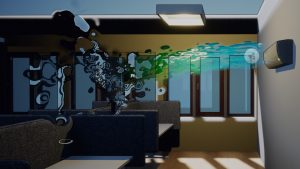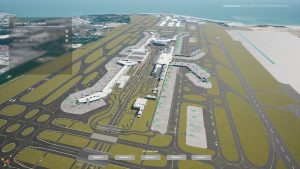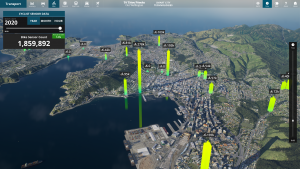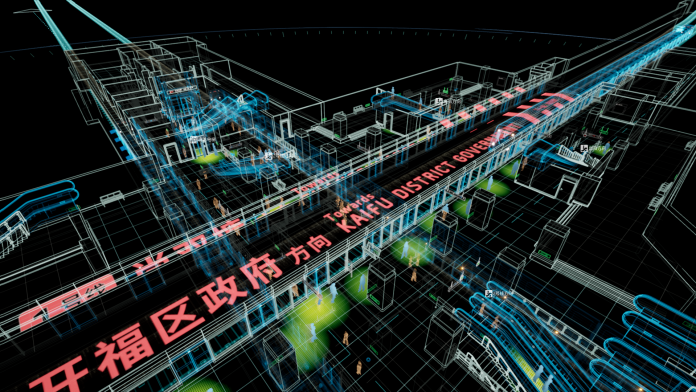Real-time 3D platforms like Unreal Engine are making it easier to create digital twins in architecture than ever before
The idea of the digital twin is still a relatively niche concept in the AEC world, but more and more industry leaders are starting to explore the benefits. A digital twin is a virtual 3D clone of a real-world entity, such as a building or city, but with the added benefits of live, real-time data.
Feeding live data from the physical world into the digital replica enables you to analyse and optimise the structure, which is incredibly useful across various aspects of the AEC pipeline, particularly for real estate developers, building owners and city planners. Having a digital twin that moves and functions just like the real thing offers instant feedback on your processes, whether you’re looking at energy usage, speed or efficiency.
Until recently, the main barrier to creating digital twins in architecture was sheer complexity. As little as five years ago, you would have needed a full stack developer to build a digital twin, but now it can be done by anyone with just a small amount of computer knowledge. Real-time 3D platforms like Epic Games’ Unreal Engine are using data visualisation to make the whole process more accessible.

Data visualisation sits at the heart of the digital twin, giving context to complex data in a spatial environment. Unreal Engine acts as a digital window to a complex back-end database, creating an immersive, interactive and user-friendly interface. This means that the data can be easily navigated and understood by anyone.
Digital twins enable real-time insights
The ability to glean real-time insights on the performance of a building, city or other structure is the key benefit of creating a digital twin. Currently, there is a visibility gap between having a space that you operate and understanding exactly how well your assets are performing.
Digital twins plug that gap, giving you a real-time window on exactly how the space is being used. This enables real-time decisions that can have a positive impact on performance, whether that’s energy efficiency, passenger flow or how easy it is for employees to do their jobs.

A digital twin can either be used to look at historic data to see how a space has operated in the past or to view current data to see how a space is currently being operated. This is incredibly useful across many different use cases, from managing on-site security to pinpointing machinery that is broken and needs to be replaced. The next step for digital twins is predictive simulation, where insights can reveal how a facility could run in future, based on historic and current data from the twin’s real-world counterpart.
There are already a number of organisations that are making use of Unreal Engine-powered digital twins. One example comes from Buildmedia, which created a virtual doppelganger for Wellington City Council to provide the authority with an overview of its city-wide assets. The interactive city twin uses real-time data to provide transportation statistics, air traffic visualisations, cycle sensor data and carpark availability. This helps decision makers to visualise future buildings and infrastructure and how they would operate within the realistic city model.
Another project with a slightly more specific focus is 51 World’s digital twin of Wuyi Square subway station. With an average 280,000 visitors every day, Wuyi Square is the busiest station in Changsha, the capital city of central China’s Hunan province. The station’s digital twin is helping to optimise and direct traffic during peak rush hours, using motion sensors to quantify passenger flow. This means that real-time decisions can be made on how the space is used and how commuters are funnelled through the station. What’s more, crowd simulations can be used to test out different scenarios, such as emergency situations.

Digital twins in the transport sector
Also in the transportation sphere, a digital twin of Changi Airport in Singapore was created by local cross-technology design practice Vouse. The aim here was to bring the ability to simulate and visualise real-time information including traffic flow and congestion around the terminals to improve navigation, safety and efficiency. Using the digital clone, architects and planners are able to visualise the impact of large-scale changes in the virtual world before implementing any real-world changes.
These examples offer just a tiny glimpse of how Unreal Engine is helping to shape the next generation of digital twins in the AEC industry by making it easier than ever before to get started.
Want to learn more about the role Unreal Engine can play, or to discuss your own implementation of digital twins? Contact us to start the conversation.
Epic Games
Unreal Engine
www.unrealengine.com/architecture
*Please note: this is a commercial profile














